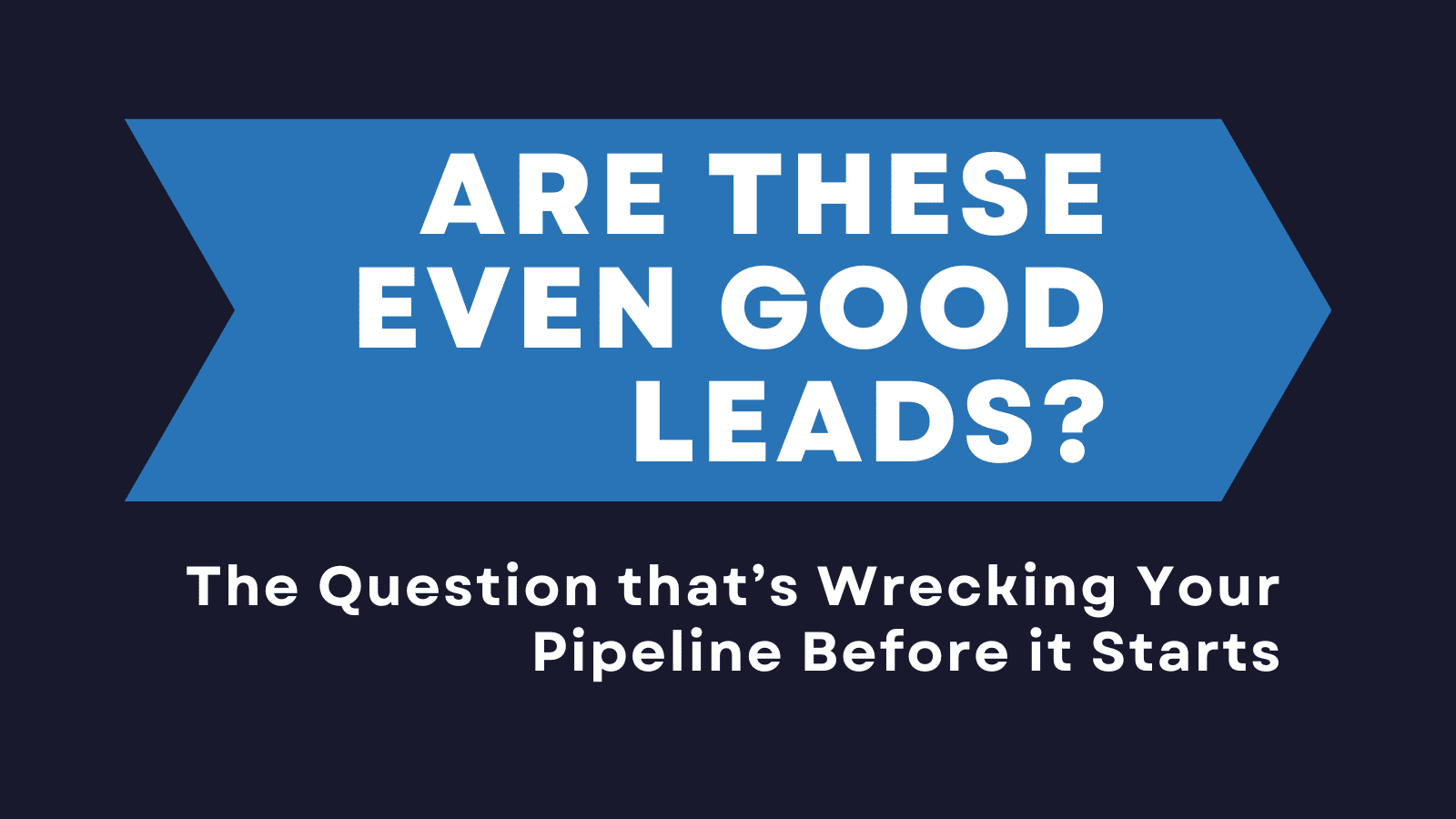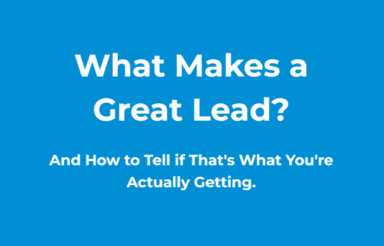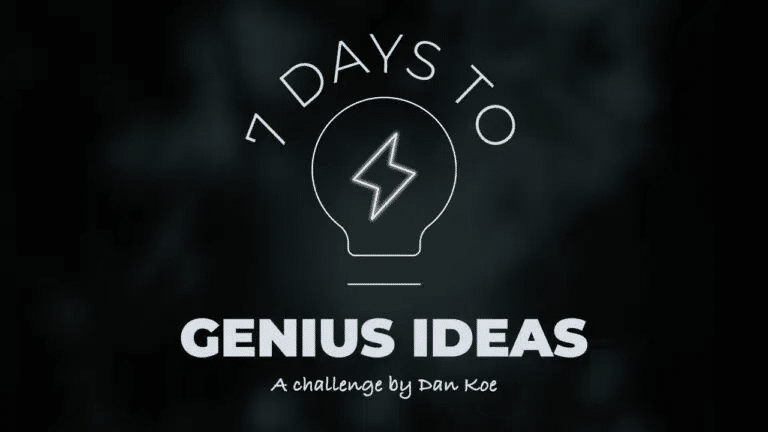If you’re in the building business, you’ve probably said it—or at least thought it:
“These leads are junk. None of them are serious.”
And hey, you’re not wrong for asking. It’s a fair question.
When someone tells you they’ve got “leads,” your guard goes up. Rightfully so. Most builders have been burned before by leads that go nowhere, waste time, or ask for things they clearly can’t afford.
So you ask the only logical thing:
“How do I know they’re any good?”
But here’s the twist: That one question—reasonable as it is—might be the very thing that’s keeping you from building a consistent pipeline.
Let’s break it down.
The Myth of the Ready Buyer
The biggest misunderstanding in all of lead generation is this:
We expect every lead to act like a referral.
But they’re not. Not even close.
A referral shows up pre-sold. Someone else did the convincing for you. They trust you because they trust the person who sent them. That’s why referrals convert like crazy.
But a lead is just someone who raised their hand. They clicked a Facebook ad. Downloaded a guide. Filled out a form. Maybe watched a video.
They haven’t talked to you yet. They don’t know your process. They’re not sure who to trust.
And that’s not a flaw. That’s just the start of the relationship.
If you’re measuring leads by how fast they buy or how easy they are to close, you’re not evaluating leads—you’re trying to shortcut trust.
The Lead Isn’t the Problem. The Expectation Is.
This is the part nobody wants to say out loud:
“Most bad leads were never bad—they were just early.”
Someone clicks on your ad or reads your article because they’re curious. Not committed. Not ready to sign a contract. Just curious.
But what happens next is everything.
If you call once, get no answer, and toss them out as a waste of time, guess what? You’ve thrown away what might’ve been a solid job six months from now.
That’s not just a theory—it’s backed by research. Data from buyer behavior surveys shows that about 50% of leads will buy what you sell in the next 18 months. But only 15% of them do it in the first 100 days.
So if you treat leads like a lottery ticket—scratch and win or trash—you’re missing the long game entirely.
Why Builders Feel Burned (And Why It’s Not Their Fault)
Let’s be honest: the lead gen industry hasn’t done itself any favors.
You’ve been promised “hot, ready-to-go buyers” and handed spreadsheets of unvetted contacts. You’ve had your phone ring with people asking about things you don’t even offer.
So when someone says, “We generate leads,” it feels like a gamble.
But here’s the shift:
Good leads aren’t found. They’re discovered.
And you don’t discover leads by chasing them. You do it by building a system that shows up consistently, offers value, and lets buyers reveal themselves over time.
The Builder’s Edge: Showing Up Differently
You don’t need to shout louder. You need to show up better.
Here’s what that actually looks like:
- Stop expecting leads to be referrals. That’s not what they are.
- Build a lead bank. Collect leads, tag them, and follow up over time.
- Nurture with value. Answer the questions your ideal buyers are asking. Solve the problems they haven’t fully named yet.
- Use the first 100 hours to discover the “now buyers.” That’s your window to see who’s ready to talk.
- Let the rest move into your 100-day nurture. Show up weekly. Stay helpful. Be human.
Most builders give up after one or two touches. That’s why their pipeline dries up. It’s not because they aren’t good at what they do—it’s because they haven’t built a system that keeps the conversation going.
How to Tell If a Lead Is “Good”
So let’s go back to the question: “Are these good leads?”
Here’s a better one:
“Did the information we used to attract this lead align with the problem I solve?”
If someone downloaded a guide about custom home budgets or filled out a form asking for info about building on their land—that’s a signal. That’s alignment. That’s a lead.
No, they’re not ready today. But they’re in the zone. And your job isn’t to pressure them into a call. It’s to stay visible so that when they are ready—you’re the one they remember.
That’s what separates the builders who win from the ones who wonder why nothing’s working.
The Bottom Line
If you’ve been frustrated with leads that don’t call back, don’t commit, or don’t convert—you’re not alone.
But the answer isn’t better leads. It’s a better understanding of what a lead really is—and a system that lets the good ones rise to the top.
That’s what the best builders are doing now. They’re not chasing. They’re not guessing. They’re not hoping.
They’re discovering.
And they’re doing it by showing up more consistently, more clearly, and more helpfully than anyone else.
Get started with Builder Sites
But they will be—if you stick around.



